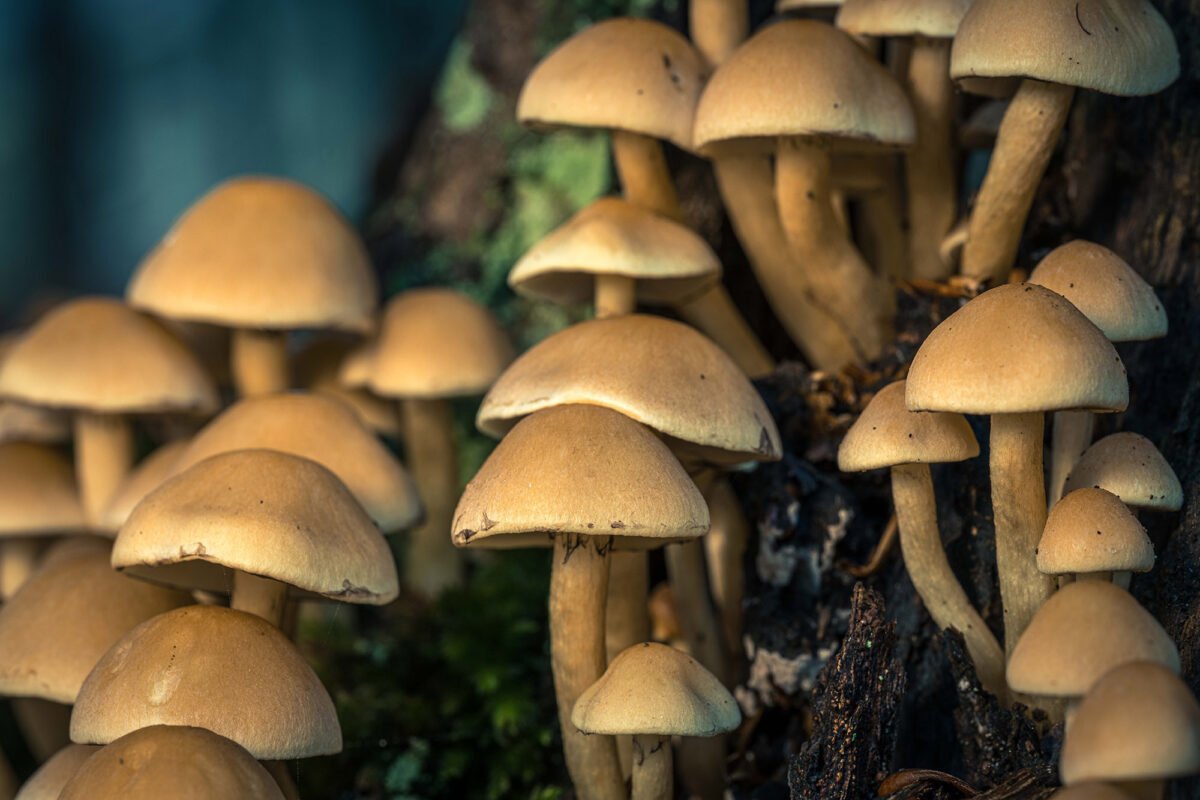The magic of mushrooms in autumn
For me, autumn is the season of beautifully colored forests. Everywhere you look there are wonderful scenes. But autumn is also the time for small wonders. As forests fill with warm colors and the air often feels damp and fresh, mushrooms start to appear everywhere. Sometimes hidden among the moss, sometimes proudly standing in the middle of the path – each one seems like a little work of art.
During my walks I can’t help but stop again and again to look, photograph, and marvel at their shapes and details. A single photo of a mushroom already tells me a story of silence, transience, and magic.
In this article I’ll share my fascination: where to find the most beautiful mushrooms, how to photograph them, and why they make autumn such a special season.
Table of Contents
What makes mushrooms so special?
What makes mushrooms so special is that they are more than just a pretty picture in the forest. They play a crucial role in nature: breaking down organic material and feeding the soil. Without mushrooms, forests and fields would look very different. But besides that function, they are above all fascinating to see.
The enormous variety of shapes and colors – from bright red fly agarics to delicate, almost translucent funnels – means you’re always surprised. It sometimes feels as if every mushroom has its own personality. Their presence in autumn also evokes a sense of transience: one moment they stand proudly, a few days later they are gone. That makes it so valuable to pause and consciously look at them, or capture them with your camera.
Mushroom spotting in the Netherlands and Belgium
Autumn is the perfect season to go mushroom spotting. As soon as nights get colder and it rains regularly, they appear in large numbers. Especially in moist forests, along shady paths, and on moss-covered tree stumps you can find them. The beauty is that you often don’t need to travel far: a walk in a local forest can already yield dozens of species.
In the Netherlands, the Veluwe and the forests of Drenthe are popular spots for mushroom lovers. Here you’ll find vast forests where, especially in October, you have a chance to see a huge variety. The dune forests along the coast also provide surprising finds. In Belgium, Hoge Kempen National Park is a must, with its varied landscape of pine forests, heathland, and ponds.
If you want to see mushrooms, it’s best to head out early in the morning. The air is fresh and damp, making the colors appear more intense. The light is softer and you’re more likely to have the peace of the forest all to yourself. Take your time and don’t just look up: many mushrooms grow close to the ground, sometimes half hidden among leaves or moss. With a little attention, you’ll discover a whole world that’s easy to overlook.
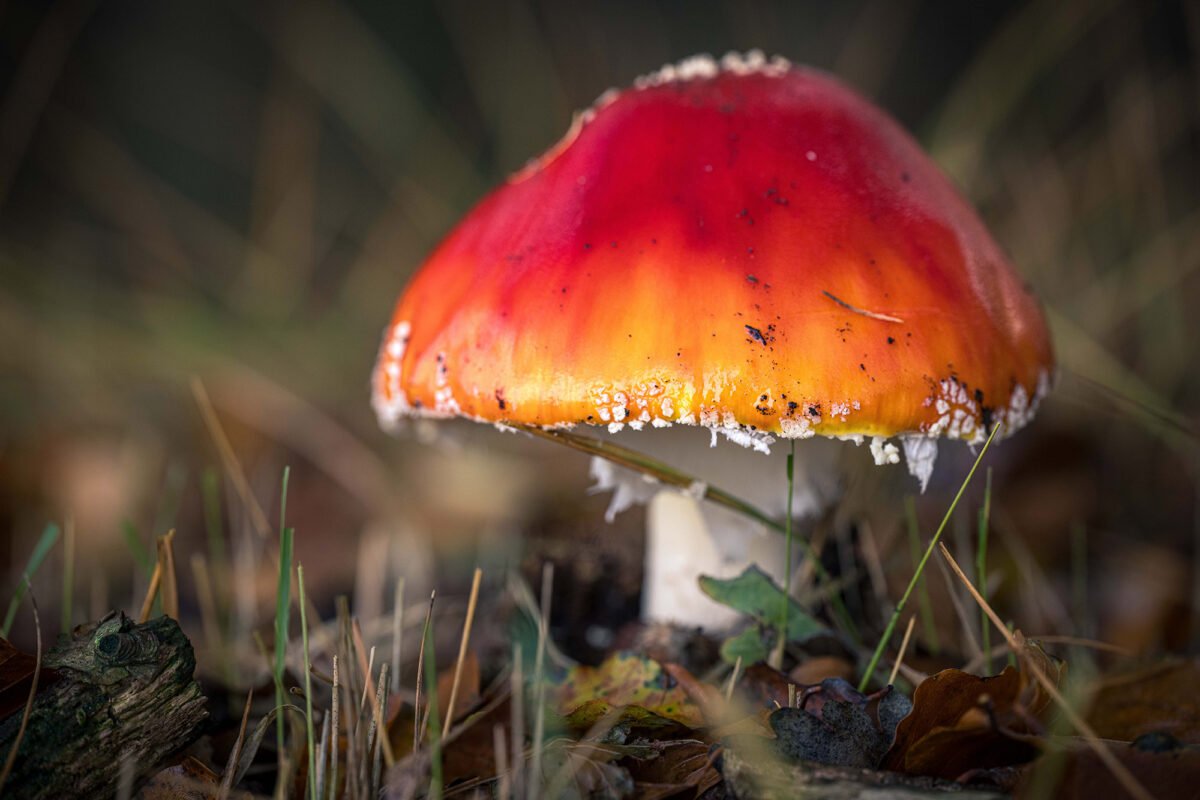
Tip: go for a walk differently than usual. Take the time to really look around and down at the ground. Only then will you discover the most wonderful details. A forest walk that normally takes an hour can easily take three or more now.
Mushrooms and experience
What makes mushrooms so special is not only their appearance, but also the experience around them. For children, a red fly agaric with white spots instantly brings up fairy tales and gnome stories. During an autumn walk, the forest suddenly turns into a magical world where every detail sparks imagination. That also makes mushrooms perfect to discover with the whole family: they are low to the ground, colorful, and often easy to find.
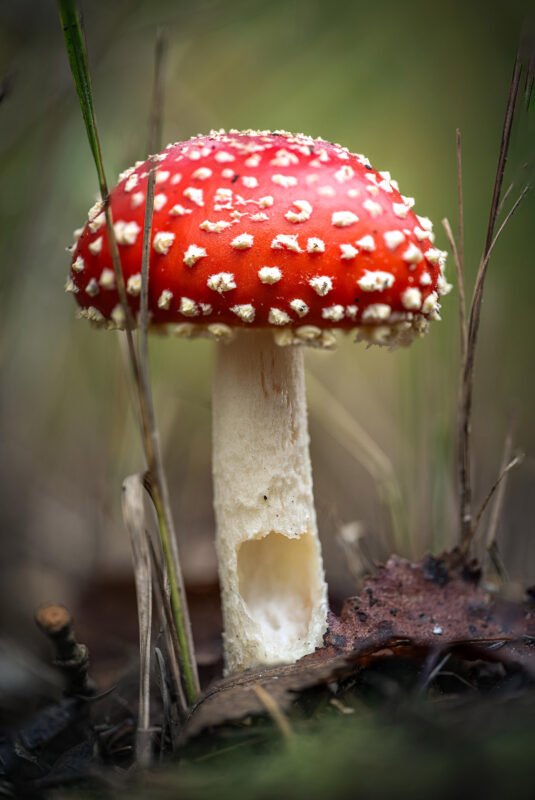
For nature lovers and photographers, the beauty lies in the silence and details. A single little mushroom pushing up through the moss, or a group standing in the mist, can tell an entire story. Personally, in such moments I often feel a sense of peace and wonder: as if time stands still and all you’re doing is looking.
This combination of childlike fantasy and adult admiration makes mushrooms unique. They invite you to slow down and look more consciously at what’s happening around you. Whether you’re out with a camera or simply enjoying a walk, mushrooms add an extra layer of experience to nature that you won’t find in any other season.
Photographing mushrooms
For photographers, mushrooms are a real treat. Their shapes and colors lend themselves perfectly to macro photography, where you capture the small details up close from a low angle. By working close to the ground, you can show the mushroom in its natural environment and at the same time create an intimate image. A simple perspective at the mushroom’s own eye level often gives the most surprising result.
Light plays a major role. On cloudy days the colors are soft and even, ideal to emphasize fine structures without harsh shadows. In the early mornings you can also benefit from dew drops and mist, which give your photos an extra magical atmosphere. Bringing a tripod allows you to experiment with longer exposure times to enhance the mood even more.
Tip: Pay attention to the background! Also consider colors. A contrasting background makes mushrooms stand out much better.
A calm, even background ensures the mushroom stands out. Sometimes a small shift in your position makes a world of difference. Don’t forget to capture the small details too: the gills under the cap, the texture of the stem, or a spiderweb covered in dew. That way each photo becomes more than just a record, but a small work of art.
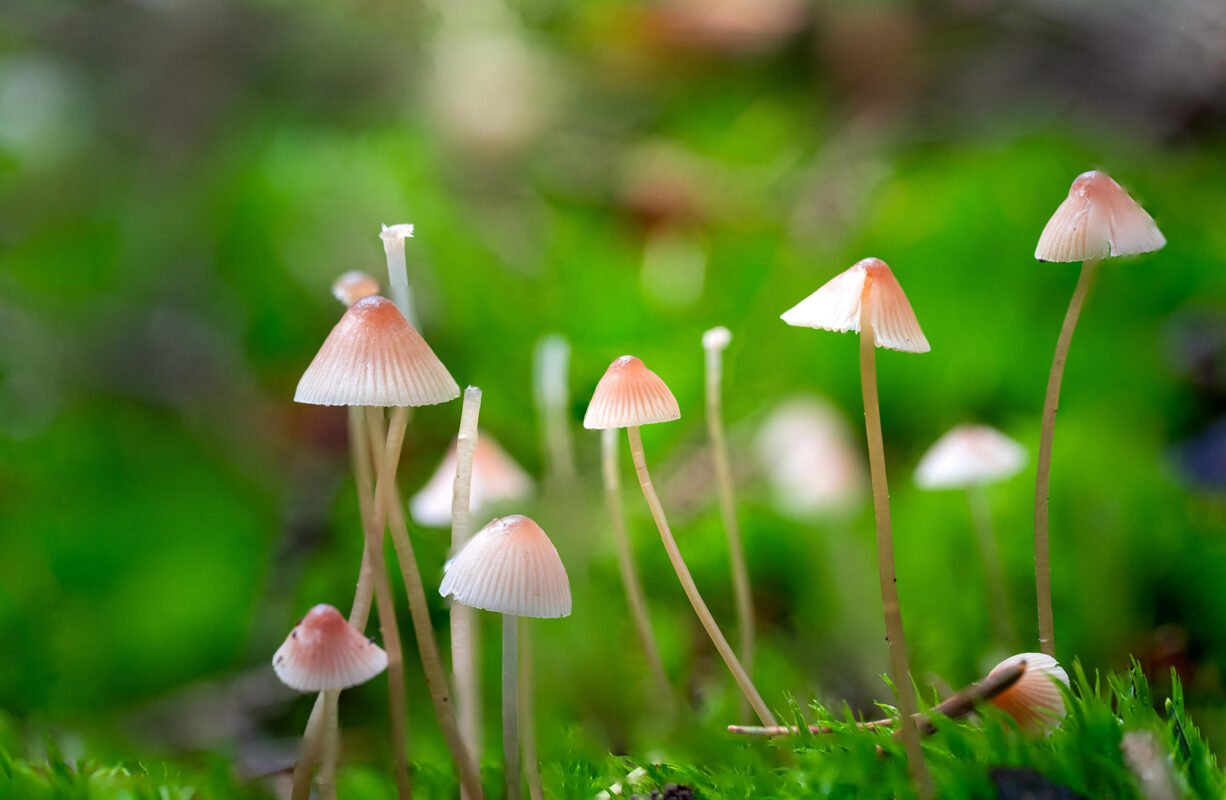
Tips for photographing mushrooms
Tip 1: After rain, a polarizing filter can really bring out richer colors.
Tip 2: A macro lens can deliver stunning images. You can get really close, but more importantly the subject is captured at true scale. A real macro lens has a magnification of 1:1 (or more) and a very short focusing distance. I personally use the Nikon MC 105 – a fantastic lens that is incredibly sharp. The advantage of this 105mm lens is that I can also photograph insects without getting too close.
Tip 3: Make sure you have a stable base. Use a tripod that can go low to the ground for sharp photos. Of course, you can also lie on the ground, but wear old clothes. I often bring a blanket to lie on without getting dirty. A plastic bag works too.
Tip 4: A bean bag for your camera is very handy. The camera stays low to the ground but also stable. This works really well. They cost around €15–20, but if you’re a bit handy you can make one yourself.
CameraNu has several options, such as this one
Tip 5: Use focus and aperture consciously. It can be beautiful to have only part of a mushroom in focus with the rest in bokeh. Or to have the whole mushroom sharp from front to back. I often take several shots with shifted focus points and combine them in Photoshop into one beautifully sharp image.
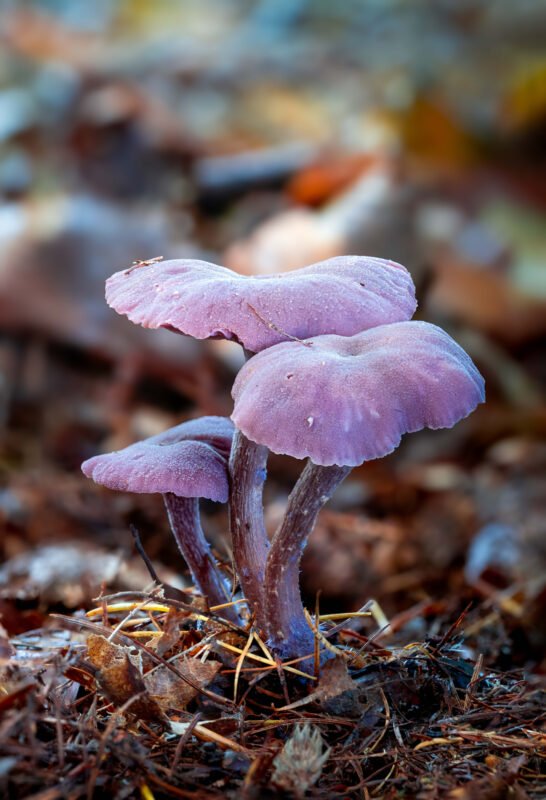
Conclusion
Autumn is without doubt the season when nature reveals its most special secrets. Mushrooms are a perfect example: small and often inconspicuous, but full of color, detail, and meaning. They invite you to slow down, look closer, and experience the forest in a new way. Whether you go out with your camera or just enjoy a walk, every encounter with a mushroom is a reminder of the magic of this season. For those who want to hold onto those moments, photos or a beautiful book offer a lasting memory of the power of autumn.
In my book “Autumn – The Splendor of Nature” you’ll find many stunning autumn photos from various regions in Europe. Each location includes QR codes for extra background info. Or take a look at my print collection, such as “Silent Giant“, a magnificent photo of an ancient oak in autumn. Or “Passage“, a typical autumn scene on a misty morning. Or if you prefer abroad: “Luminous“, a stunning print of yellow larches in the Dolomites. My book “Dolomites – A Journey through Breathtaking Heights” also contains many autumn photos and, like my other books, includes QR codes.


